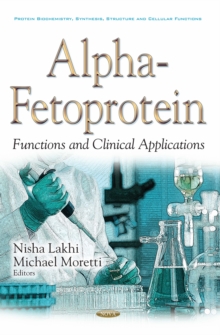
Airborne and Biological Monitoring to Assess Occupational Exposure to Isocyanates PDF
by Jimmy Hu
Part of the Biochemistry Research Trends series
Description
This comprehensive guide is an essential resource for professionals working in industries that use isocyanates in the manufacturing of polyurethanes, foams, coatings, adhesives, and other materials.
It provides a thorough understanding of the potential health hazards posed by isocyanates and offers practical insights into reducing occupational exposure to these compounds through effective airborne and biological monitoring techniques.
The book covers the latest policies and occupational exposure standards for isocyanates, making it relevant for an international audience.
It also highlights the rapid advances in analytical methods and new technologies, including modern analytical methods used to quantify isocyanate derivatives from both airborne and biological monitoring.
The guide focuses on the latest developments in airborne monitoring methods, including those evaluated based on the latest peer-reviewed journal papers.
Additionally, it provides the first substantial review of biological monitoring exposure to isocyanates in the workplace.
The book delves into the analytical methods used for better efficiency and quick turn-around, the efficacy of exposure controls, and quality assurance programs used.
This accessible guide will be useful to occupational hygienists, analytical chemists, laboratory chemists, researchers, students, and anyone seeking to manage the risks of isocyanates in the workplace.
It covers a range of topics, from exposure routes and risk management to exposure controls, sampling, and laboratory analytical methods.
The book concludes with a summary of future work required in the field, research priorities, and predictions of long-term research goals for both airborne and biological monitoring of occupational exposure to isocyanates.
Overall, this is an indispensable reference for anyone involved in managing isocyanate risks in the workplace.
Information
-
Download - Immediately Available
- Format:PDF
- Pages:139 pages
- Publisher:Nova Science Publishers, Inc.
- Publication Date:27/09/2023
- Category:
- ISBN:9798891130999
Information
-
Download - Immediately Available
- Format:PDF
- Pages:139 pages
- Publisher:Nova Science Publishers, Inc.
- Publication Date:27/09/2023
- Category:
- ISBN:9798891130999










